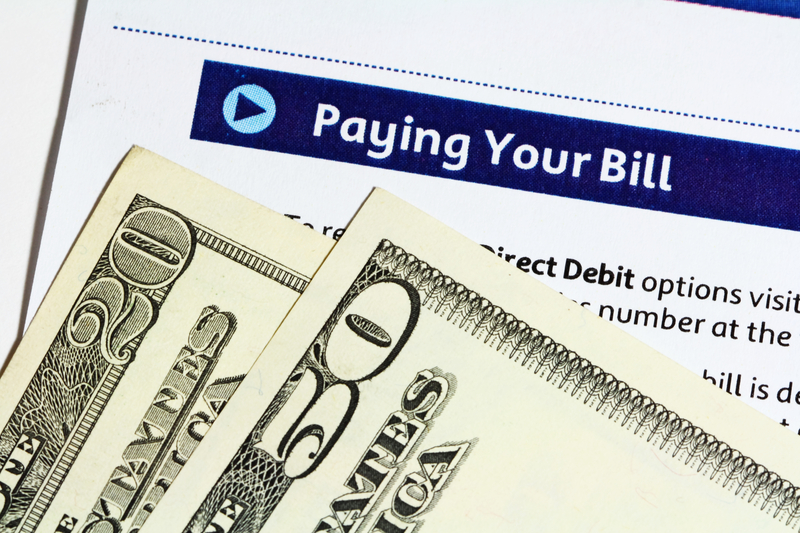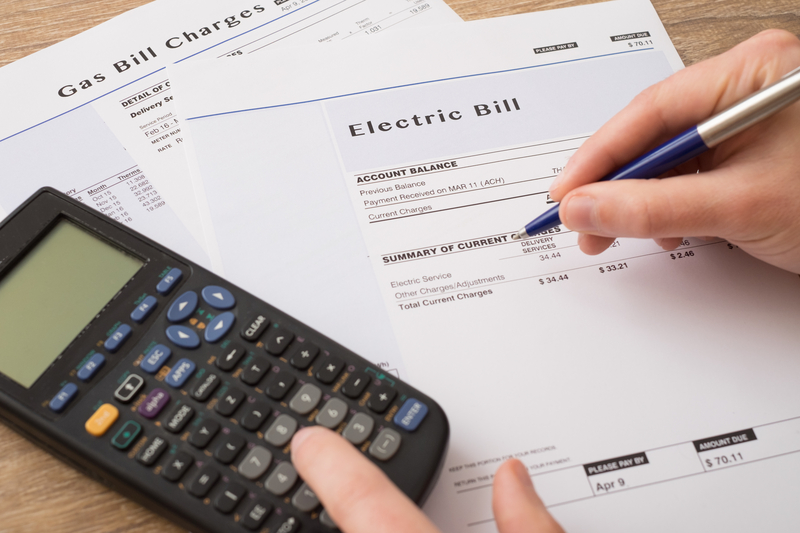This article is your complete guide to learning how to switch energy providers. There are many different reasons homeowners or businesses might want to consider switching their providers. The best way to switch your electric companies is to contact your current supplier and cancel your plan! However, switching your energy supplier can be difficult depending on where you live and your type of energy market. If you live in a Deregulated Market, switching will be easy! A Regulated Energy Market makes switching impossible since there is only one provider for your area.
Here at The Energy Professor, we want to give you the information you need to not only save money on your energy bill but to also become more energy efficient. We hope you find this post helpful! And makes it easier for you to know more about how to switch your energy provider. Be sure to also check out our one-of-a-kind energy savings calculator!
The Energy Professor Electricity Rate Check Tool
How to Switch Your Energy Providers 2025

Switching energy suppliers can be a big step forward in optimizing your energy costs and environmental impact. Whether you’re motivated by potential savings, a desire to support renewable energy, or simply exploring alternative options. This guide will walk you through the process of switching energy suppliers. By following the steps below, you can navigate the transition smoothly and make an informed decision that aligns with your needs and preferences. Let’s delve into the key considerations and actions required to successfully switch to a new electric company and unlock potential benefits in the process.
What steps should I take to switch energy suppliers?
- Compare Energy Plans: Use a comparison website or online tool to compare energy plans from different suppliers. Look for plans that offer competitive prices and meet your energy needs.
- Choose a New Supplier: Once you have compared energy plans, choose a new supplier that offers a plan that suits your needs and budget. You can contact the supplier directly or sign up online.
- Provide Information: You will need to provide some information to your new supplier, such as your name, address, and energy consumption details. Your new supplier will also ask for your meter reading to ensure that you are billed correctly.
- Wait for the Switch: Your new supplier will contact your old supplier to initiate the switch. This process usually takes around 2-4 weeks, depending on your location and the supplier.
- Confirm the Switch: Once the switch is complete, your new supplier will send you a confirmation letter or email. You will also receive your first bill from your new supplier.
It is important to note that you should not cancel your existing energy plan until the switch is complete. This ensures that you have a continuous supply of energy during the switching process. Also, check if there are any cancellation fees associated with your current plan before switching to avoid any unexpected charges.
Related Post: Guide on How to Change Name on Electric Bill
Questions To Ask Before You Switch Electricity Providers

If you’re ready to switch energy providers, there are a few things to consider before leaping. These simple questions will help you understand how to switch your energy provider. Checking your current rates and understanding your energy bill is very important when switching companies. Your current energy provider should provide you with a bill every month that will explain all of your charges and current electricity rates.
What Do I Need to Ask Myself to Switch Electricity Providers?
- Am I in a deregulated energy market? – If you’re unsure, there are many tools where you can enter your zip code to learn if you are in a regulated or deregulated energy market. Remember, if you are in a regulated energy market, you are bound to your energy provider.
- What type of plan do I want? (Fixed, variable, indexed) – This is very important to know.
- A fixed-rate electricity plan charges the same rate per kWh of electricity for the term of your agreement. The price is the same no matter how much electricity you use. The only way your price will change is if there are changes in the delivery fees.
- A variable rate electricity plan is a month-to-month electricity plan. Your rate can change every month. Your provider is required to publish the next month’s rate to give you notice of what rate you’ll pay.
- An indexed rate electricity plan is similar to a variable rate plan, in that your price will change regularly. The difference between a variable rate plan and an indexed rate electricity plan is the formula. Indexed rate electricity plans are tied to a published market price, like the cost of natural gas.
Related Post: How Many Watts in One Kilowatt Hour?
Questions to Ask Possible New Energy Providers

If you are choosing to switch energy suppliers, we want to arm you with questions to ask your possible new provider. When trying to find the best deal on energy prices, it can be challenging to look beyond an attractive price tag. Some offers may come with conditions that won’t be beneficial for you in the long run. These questions are recommended to as a possible new provider when looking into other electricity providers.
What Do I Need to Ask Electricity Providers When Changing Energy Suppliers?
- Are there any discounts or current promotions if I swap electricity providers? – Just like any other market, energy companies will be competitive and offer discounts or promos. Make sure to ask before you sign a contract!
- Have I checked all the stipulations on my new contract? – There can be different fees involved with signing a new contract with a different energy company. To maximize your savings, it is important to fully review terms before you sign a contract.
- How long of a contract do I want? – Contract length can offer you savings depending on the energy company. If you are looking for a trial run, you may only want to sign a 6-month contract agreement rather than a multi-year or full-year contract.
- If I change my electricity provider, how much will they charge? (“kilowatt-hour” (kWh) of electricity) – Make sure you know what you are currently paying. This price is located on your energy bill. If the price is better at a new energy provider, it may be time to switch.
- What are my payment options? – Monthly? Yearly? Questions to ask for your financial planning.
- What is the new contract like? – Most people know what to expect when they start a new energy contract. However, what about when it ends? Are there penalties or expectations when the contract expires?
Related Post: 8 Tricks to Lower Your Energy Bill
Switch Energy Providers – The Basics

Switching energy suppliers is easier than you think if you live in markets that allow you to do so. Many consumers might be looking to change electricity providers with the rising cost of energy. Switching electric suppliers can be as easy as doing a little research and using our Energy Tool to switch your provider for you. Unfortunately, that does not apply to everyone, as only consumers who live in a deregulated energy market have a choice.
What does switching electric companies mean?
- Switching your electric company means leaving whatever utility provider you have and changing to a new one. That means, leaving your old rate and contract behind, and starting a brand new one with a rate that works for your needs.
Can I change my electricity supplier?
- Consumers who live in a deregulated market can change their electricity supplier.
Below we will take you through the steps on how to switch electric companies. But first, you need to find out if you live in a regulated or deregulated energy state. There are only 16 states in the United States that have deregulated energy that would allow consumers to switch electricity suppliers.
Why would I want to switch my electricity provider?
- Lower Prices: One of the most common reasons people switch electricity providers is to save money on their energy bills. By comparing rates and plans from different providers, you may be able to find a plan that offers a lower price per kilowatt-hour, which could result in significant savings over time.
- Better Customer Service: If you are unhappy with the customer service you are receiving from your current electricity provider, switching to a new provider could be a solution. Look for a provider that has a reputation for excellent customer service to ensure that any issues or concerns are addressed promptly.
- Green Energy Options: Many electricity providers offer renewable energy options, such as wind or solar power, that can help you reduce your carbon footprint. If you are interested in reducing your environmental impact, switching to a provider that offers green energy could be a good choice.
- Rewards Programs: Some electricity providers offer rewards programs, such as cashback or gift cards, for signing up or using their services. If you are interested in earning rewards or incentives, switching to a provider with a rewards program could be a smart move.
- Moving to a New Area: If you are moving to a new area, you may need to switch electricity providers to ensure that you have access to reliable and affordable electricity. Check with local providers to see what options are available in your new location
Can I switch my energy provider at any time?
- Depending on your contract with your energy provider and if you live in a deregulated state, you can switch utility companies at any time!
There are various contracts that energy providers offer. Find out if your contract is a month-to-month or yearly contract. It’s important to review the term with your current provider. Most contracts allow consumers to cancel their terms early but may result in early termination fees. However, termination fees could be worth it if the new energy provider has better terms, rates, and customer service!
No matter what you choose, it is very important to review your current contract before you start researching new energy providers. After you are fully aware of what charges may come if you cancel early, or stick out your contract to the end, then it is time to research new companies. Some energy providers, upon negotiation, assist with termination fees or waive setup fees if you switch your energy supplier to them. It never hurts to ask.
Related Post: Complete Guide on How to Choose An Electricity Provider
How to Switch Energy Providers FAQ

Q: What should I consider when choosing a new energy plan?
A: When selecting a new energy plan, consider factors like the type of rate (fixed, variable, or indexed), contract length, any fees for early termination, and whether the plan includes renewable energy options. Evaluating these factors can help ensure the plan fits your budget and energy consumption patterns.
Q: Are there any hidden fees when switching energy providers?
A: Always review the terms of a new energy contract carefully. Some providers may include fees not immediately apparent, such as setup or switching fees. Additionally, check for any penalties associated with leaving your current provider before the end of your contract term.
Q: How long does it take to switch energy providers, and will there be any interruption in my service?
A: Switching providers typically takes about 2-4 weeks, but this can vary based on your location and the providers involved. There should be no interruption in your service as the switch is mainly administrative and does not involve physical changes to your connection.
Q: Can I switch energy providers if I rent my home?
A: Yes, tenants can switch energy providers if they are responsible for paying their own utility bills. However, it’s important to check your rental agreement or speak with your landlord to ensure there are no restrictions or specific requirements for switching.
Q: What are the benefits of choosing a green energy plan from my new provider?
A: Choosing a green energy plan allows you to support renewable energy sources, which can reduce your carbon footprint and contribute to environmental sustainability. Additionally, some states offer incentives for using renewable energy, which could lead to further savings or benefits.
Do you Need Cheaper Electricity?
If you’ve taken the time to understand the information on your bill and discovered you’re paying more than you’d like for your electricity, have you looked around for a cheaper deal? The Energy Professor has a wealth of information on ways to save on your utilities, including details of top deals that could significantly reduce your monthly or quarterly electricity bills.
We hope you found this article helpful! If you are looking for ways to increase the energy efficiency and sustainability in your home be sure to take a look at all of the latest renewable energy options in your area. The Energy Professor helps residential and small business owners find qualified energy suppliers in New York, New Jersey, Pennsylvania, Texas, Ohio, Maryland, Illinois, and Massachusetts


